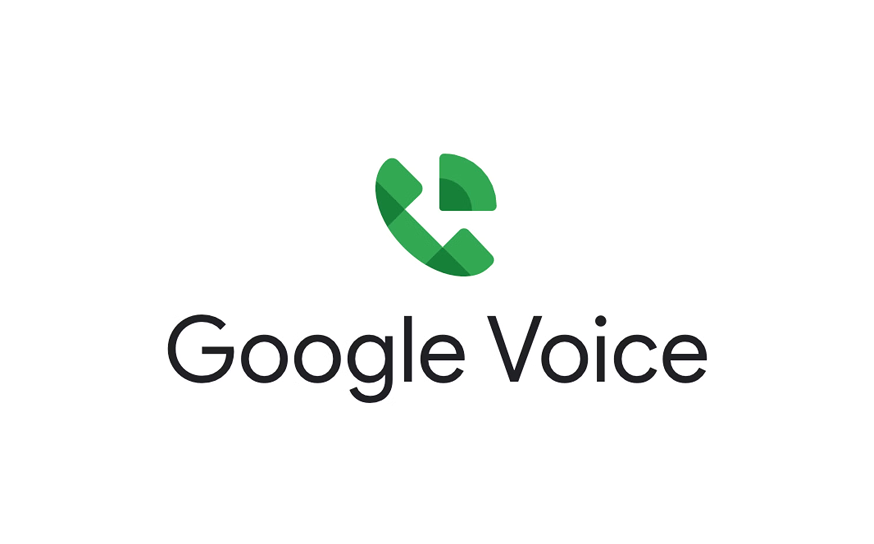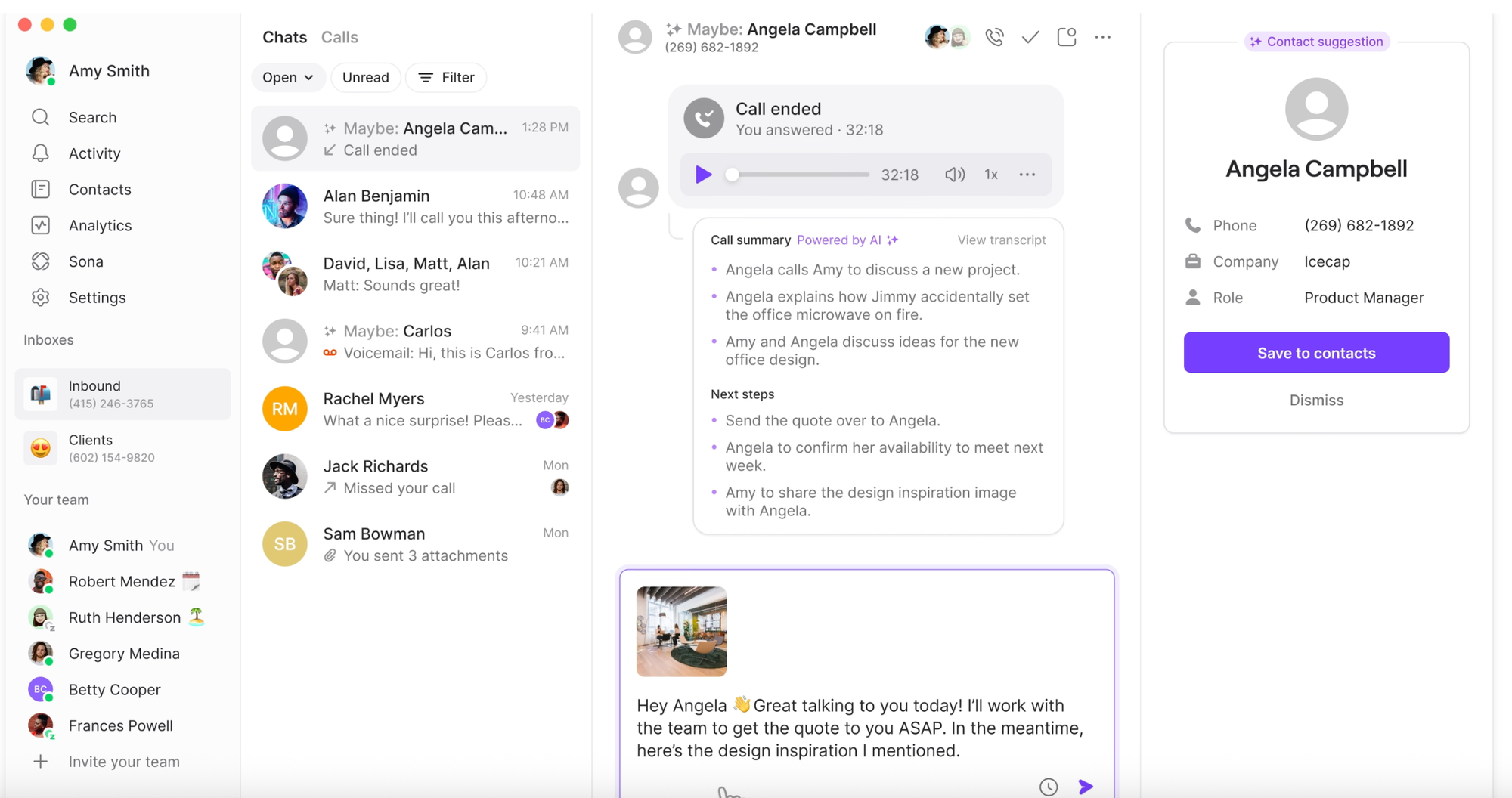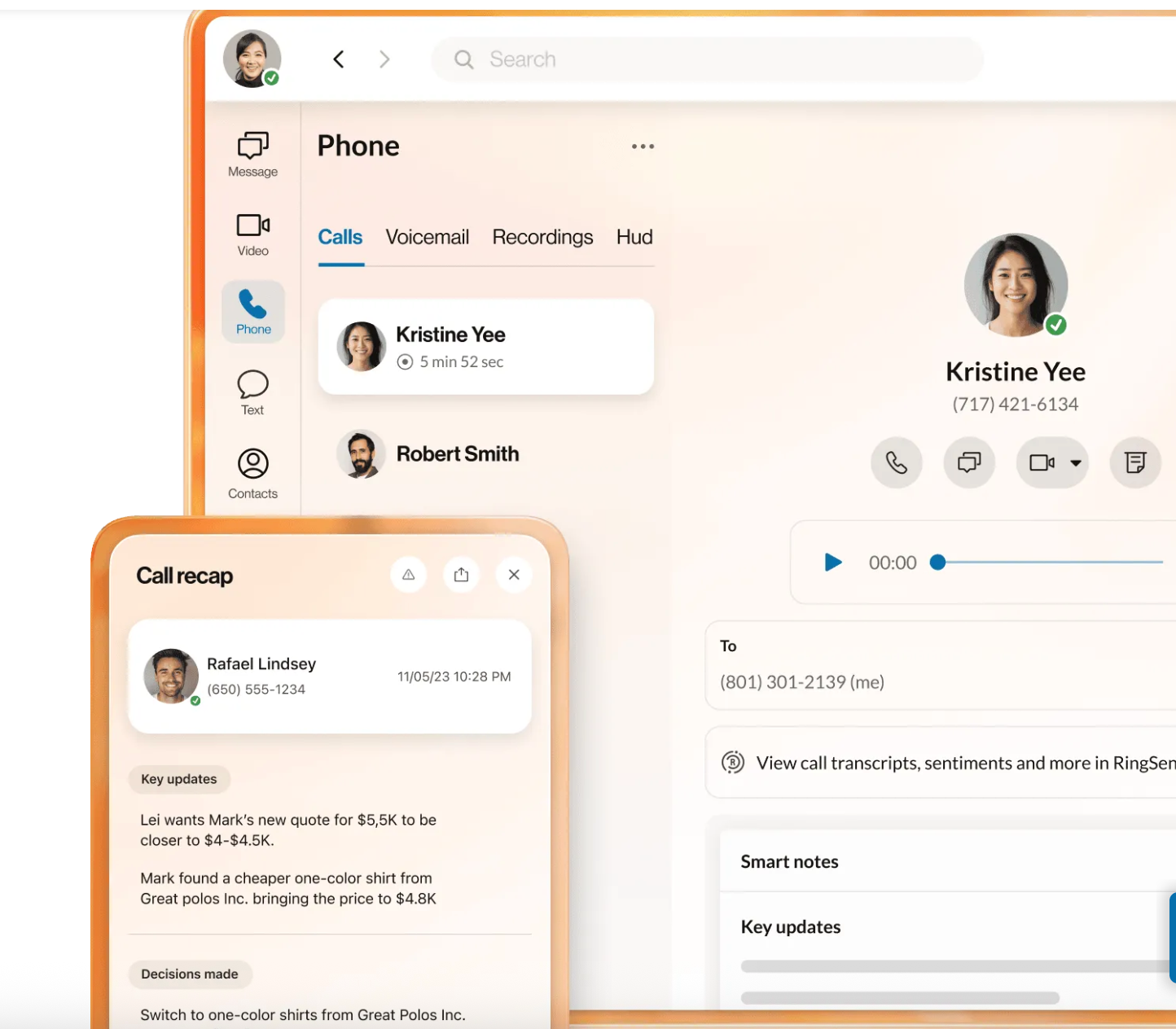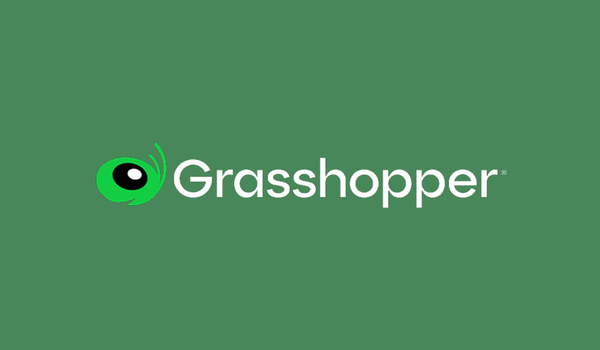Google Voice Alternatives: Better Options for Small Business Phone Systems

Google Voice typically appears first in search results as you look for a business phone system. The service costs just $10 per user monthly, making it one of the most affordable VoIP providers available. Small businesses focused on their budget find this option attractive. However, the cheapest option might not serve your growing business's needs best.
Google Voice's price point looks appealing, but its limitations could affect your business communications significantly. The service launched in 2009 and lets users make calls and send text messages through internet connections. Many small businesses outgrow its simple functionality quickly. A comparison of Google Voice reviews reveals that alternatives like Ringo provide better shared features. Ringo's starting price sits slightly higher at $15 per user monthly.
Your small business phone system needs the right features to succeed. Each Google Voice alternative brings different capabilities to help your company grow. OpenPhone excels with its shared tools, while Dialpad stands out for its AI capabilities. The best choice depends on your business's specific requirements, especially when you have plans to scale.

What is Google Voice?
Google Voice is a free VoIP (Voice over Internet Protocol) service that gives users a phone number for making calls, sending texts, and checking voicemail, all from a web browser or mobile app. Originally built for personal use, it’s gained traction among freelancers and small businesses looking for a basic business line without the cost of a full-featured phone system.
What Google Voice Offers and Where It Falls Short
Overview of Google Voice features
Feature | Description |
|---|---|
VoIP Calling | Make and receive calls over Wi-Fi or mobile data |
Text Messaging | Send and receive SMS through the app or web browser |
Voicemail Transcription | Converts voicemails to text automatically, viewable in app or email |
Call Forwarding | Forward calls to multiple linked phone numbers |
Ring Groups | Route incoming calls to multiple team members simultaneously or in order |
Multi-Device Access | Use across desktop, tablet, and smartphone |
Google Integrations | Works with Google Meet, Calendar, and Gmail for smoother workflow |
Do Not Disturb Mode | Silence calls and notifications during specific hours |
Searchable History | View and search past calls, texts, and voicemails from your Google account |
Number Porting | Bring your existing phone number into Google Voice |
Why it's not ideal for scaling businesses
As businesses scale, Google Voice’s limitations can become roadblocks. Here’s why:
- One Number Per Account: Each user gets only one phone number, making team coordination difficult.
- Extra Costs with Google Workspace: You’ll need a Google Workspace subscription (starting at $7/user/month) just to access business features.
- No Toll-Free or Vanity Numbers: Lacks support for branded or national customer service numbers.
- Limited Integrations: Only integrates with Google apps, not with common CRMs or third-party tools.
- No Shared Team Inbox: You can only communicate directly with customers, not internally with your team members
- Call Recording and Ring Groups Require Upgrade: These features are only available on plans starting at $20/user/month.
- No SMS Automation or Auto-Replies: You can’t automate responses or set up workflows for customer support.
Google Voice Reviews and User Sentiment
A look at real user experiences helps you decide if Google Voice fits your business communication needs or if you should look at other options.
Common praise: Simplicity and Google integration
Users love Google Voice's user-friendly interface. The platform gets high marks for its "spacious and pleasant user interface" that needs minimal learning, especially if you already know Google Workspace.
The platform's integration with Google's ecosystem stands out as another key benefit. Users like having their communication tools together in the Google environment they use daily.
While Google Voice is a helpful tool for solo users and basic needs, a growing number of users have voiced frustration with its limitations. Here are some of the most
Common complaints
1. Outdated User Interface and Missing Modern Features
Many users feel the platform hasn't evolved with the times. From a lack of basic messaging enhancements to limited customization, Google Voice’s interface feels stuck in the past.
“The app works but lacks a ton of functionality. It’s a little long in the tooth and I'm surprised Google hasn't updated any of the features to be competitive with other messaging platforms. No message scheduling, extremely limited GIF sizes, no read receipts, no reaction emojis, and overall very clunky to use. It's fine for what it is but it desperately needs a refresh.” — Review on Google Play
2. Lack of Customer Support
Unlike paid business phone systems, Google Voice offers minimal support. Many users report delays or lack of response when issues arise, especially on the free plan.
3. Feature Gaps for Business Use
Users commonly mention:
- No SMS automations or scheduling
- No integrations with non-Google tools
- No call queuing or team collaboration features
These gaps become especially frustrating for teams trying to run customer service or sales from the platform.
4. Inconsistent Reliability
Some users report occasional issues with missed texts, dropped calls, or delayed voicemails. While not widespread, these inconsistencies erode trust for businesses that rely on seamless communication.

Best Google Voice Alternatives for 2025
Looking for stronger features than Google Voice? Several alternatives have become standout options for small businesses in 2025. These platforms solve the limitations we discussed earlier and provide advanced capabilities to support your growing business needs.
Ringo: The Upcoming Power for Business Phones

For small businesses that want an easy-to-use, feature-rich alternative to Google Voice, Ringo stands out in 2025. It is a new tool in the market that promises to tackle real business needs in the phone system industry. Currently free (as they are in Beta testing), it offers all the essentials of Google Voice, plus advanced tools designed for modern teams.
What You Get with Ringo:
- ✅ VoIP calling and SMS handling - the basics of Google Voice, done right
- ✅ Call transcription - so you never miss key details
- ✅ Shared team inbox - invite other team members, tag and comment on each other to reply to customers in a more efficient way
- ✅ AI-powered call summaries and recommendations to help you keep track of any call
- AI Call Assistant that answers the call on your behalf (fully customizable)
- ✅ Contact-level notes and document sharing for better team collaboration
Ringo combines simplicity with intelligent features, making it a powerful fit for small service teams, agencies, and local businesses that need more than just a phone line.
OpenPhone: Shared numbers and automation

OpenPhone stands out where Google Voice lacks team collaboration through its shared number functionality. OpenPhone works best for:
- Support phone numbers where multiple team members handle inquiries
- Inbound sales numbers with shared responsibility
- Company main lines managed by several staff members
OpenPhone lets you automate text messaging by scheduling messages based on custom triggers and time-based conditions. You can set up after-hours auto-responders that send automatic text responses when your team is unavailable.
OpenPhone and Ringo are fairly similar products, however, Ringo offers small businesses the opportunity to re-engage with customers through SMS broadcasts.

Grasshopper
Grasshopper, like Google Voice, is a straightforward virtual phone system aimed at solopreneurs and small businesses that want an easy way to manage business calls. It offers basic features such as call forwarding, voicemail, and custom greetings, making it a comparable alternative for those who value simplicity over functionality.
However, Grasshopper shows its limits quickly:
- ❌ No shared team inbox
- ❌ No CRM or app integrations
- ❌ No AI tools for growing teams
Starting at $14/month, it’s easy to set up and use, but not built for businesses that need scalability, automation, or team-based communication features.

Dialpad: AI coaching and CRM sync
Dialpad is designed for larger teams, especially sales-driven ones, where coaching, tracking, and CRM syncing are essential. Its AI Coaching Hub is built to support sales managers by ranking calls and identifying training opportunities based on conversation quality. Integrations with Salesforce, HubSpot, and Slack ensure all communications are automatically logged.
Key Features:
- 🤖 Real-time transcription and AI call summaries
- 📊 Conversation quality scoring
- 🔗 CRM integrations with major platforms
- 🧩 Live coaching insights during calls
Pricing starts at $15/user/month, with AI tools available on higher-tier plans from $25/user/month.
For smaller businesses, this level of functionality may be overkill, especially if you don’t need CRM syncing or live coaching. Simpler tools like Ringo offer a more focused, cost-effective alternative.

RingCentral: Toll-free numbers and integrations
RingCentral is a robust communications platform built for larger businesses and sales-focused teams. It includes advanced tools like toll-free and vanity numbers, which enhance professionalism and make it easier for customers to reach you at no cost.
Its RingSense AI analyzes call conversations to help sales managers coach reps and improve performance, similar to Dialpad’s Coaching Hub. With 330+ app integrations and enterprise-level security, RingCentral is geared toward building a comprehensive, secure communications stack.
Key Features:
- ☎️ Toll-free and vanity numbers
- 🤖 RingSense AI for sales intelligence
- 🔗 330+ business app integrations
- 🔒 Seven-layer enterprise-grade security
Pricing starts at $20/user/month, with higher-tier plans unlocking more advanced AI and integration features.
That said, many small business users find RingCentral too complex and expensive for everyday operations. The feature set can be overwhelming, and setup requires time and technical know-how. If your business needs a simpler, more affordable tool to handle calls and texts effectively, Ringo offers a cleaner, more user-friendly alternative.
Choosing the Right Alternative Based on Business Needs
Comparison Table
| Feature / Provider | Google Voice | Ringo | Grasshopper | OpenPhone | Dialpad | RingCentral |
|---|---|---|---|---|---|---|
| Starting Price | $10 + $6 (Workspace) | $15 | $14 | $15 | $15 | $20 |
| Calling & Texting | ✅ Yes | ✅ Yes | ✅ Yes | ✅ Yes | ✅ Yes | ✅ Yes |
| Voicemail Transcription | ✅ Yes | ✅ Yes | ✅ Yes | ✅ Yes | ✅ Yes | ✅ Yes |
| Team Collaboration Tools | ❌ None | ✅ Yes (shared inbox, notes, files) | ❌ None | ✅ Yes | ✅ Yes | ✅ Yes |
| SMS Broadcasts | ❌ No | ✅ Yes | ❌ No | ❌ Limited | ❌ Limited | ❌ Limited |
| CRM & App Integrations | ❌ Google only | ❌ Coming soon! | ❌ None | ✅ Salesforce, HubSpot, Slack | ✅ Salesforce, HubSpot, Slack, more | ✅ 330+ apps |
| AI Features | ❌ None | ✅ Yes (summaries, suggestions) | ❌ No | ✅ Yes | ✅ Yes | ✅ Yes |
| Best For | Solo users, simple needs | On-the-go teams, growing teams | Solopreneurs, basic phone use | Small/growing support teams | Sales teams, performance tracking | Large teams, enterprise workflows |
Conclusion
Choosing the best phone system for your business depends on what your team needs today and how you expect to grow. Google Voice starts at a low $10 per month, but once you add the required Google Workspace plan, the real cost is around $16 per user. It works well for basic calling and texting, especially if you already use Google tools. But many small businesses quickly find its limits.
Thankfully, there are better options depending on your situation.
- OpenPhone is good for small teams that want to share a number and respond to customers together.
- Dialpad helps sales teams with smart tools that record calls, create summaries, and show what to improve.
- RingCentral has many features and app connections, but it is often too complex and expensive for smaller businesses.
- Grasshopper is simple and good for solo use, but it does not offer team features or integrations.
Then there is Ringo, made for busy teams that need something simple but strong. It has calling and texting like Google Voice, but also gives you:
- A shared inbox for your whole team
- The ability to send one message to many customers at once
- Smart tools that help you follow up after calls
- An app that works well on the go with clear call quality
Ringo is currently FREE as they are in beta phase
Before you choose, think about:
- How many people will use it now and later
- How your team works together
- What you can spend each month
- If it connects with the tools you already use
The right phone system should help your business stay connected and grow. If Google Voice feels too limited and other tools seem too much, Ringo is a smart choice that gives you what you need without the extras you don’t.
FAQs
Q1. What are some top alternatives to Google Voice for small businesses? Some popular alternatives include Ringo, OpenPhone, Grasshopper, Dialpad, and RingCentral. These options offer more advanced features like shared numbers, AI-powered insights, and extensive integrations that can better support growing businesses.
Q2. Is Google Voice suitable for small businesses? While Google Voice can work for very small teams or solopreneurs, it has limitations for scaling businesses. These include restrictions on international calling, text messaging, and the number of users on basic plans. Many businesses outgrow its functionality as they expand.
Q3. How does Google Voice pricing compare to alternatives? Google Voice starts at $10 per user per month, but requires a Google Workspace subscription (at least $6 per user monthly). This makes the effective starting price $16 per user monthly. Some alternatives like Ringo offer comparable or better pricing with more business-focused features.
Q4. How do I choose the right Google Voice alternative for my business? Consider factors like team size, growth projections, international calling needs, collaboration requirements, budget, and integration needs with existing tools. For example, Ringo is great for growing teams, while Dialpad excels for call centers needing AI-powered insights.





